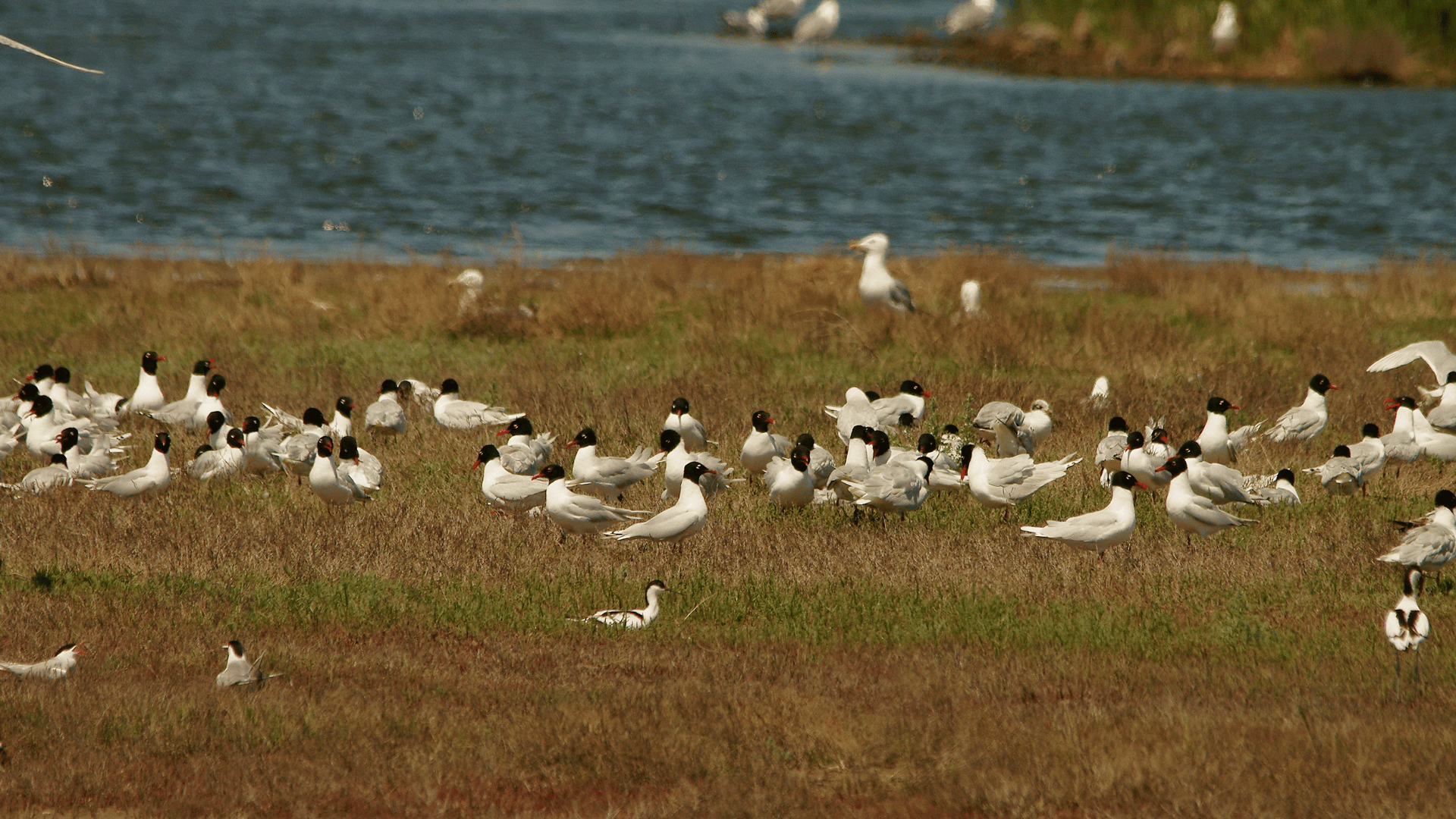Artificial islands to help gulls and terns reproduce
Seven species of little gulls and terns breed in mixed colonies in the marshes, lagoons and salt marshes along the French Mediterranean coast. Most of these species have a worrying conservation status: the deterioration of their nesting sites has been identified as one of the main problems. Over the last 10 years, 16 organisations managing natural areas have restored or created artificial islands with nesting sites. The results of the study conducted by our Scientific Director Timothée Schwartz were unveiled on 29 March 2023 in an article published in the journal Conservation Biology (in English). They are very encouraging!

Colony of Mediterranean gulls (Ichthyaetus melanocephalus) © SzymonBartosz
From restoration to traps
Even with the best of intentions, human interventions aimed at restoring nature do not always work as intended. On the one hand, restoration can recreate attractive habitats for threatened species, generally because it reproduces good quality habitats for the target species. On the other hand, the actual quality of the restored site may be insufficient for the species, so that its reproduction could be compromised or reduced in the restored landscape. Such a mismatch between the attractiveness and suitability of restored habitats creates what is known as an “ecological trap“. Unfortunately, these traps can have harmful consequences for the populations of threatened species.
In the field, such traps can appear when attractive landscape resources – such as breeding sites – are restored before all the other necessary resources are available – such as food resources. Such a risk may arise when artificial breeding sites such as nest boxes are installed. However, few studies have assessed the attractiveness and suitability of these artificial constructions. Such an assessment is necessary to determine whether or not the restored habitats are ecological traps. In our study, we investigated this question by exploring the results of a vast project to restore nesting sites for colonial gulls and terns in the south of France.
Restoring nesting sites for gulls and terns in the south of France
Seven species of little gull and tern breed in mixed colonies in the marshes, lagoons and salt marshes along the French Mediterranean coast: Herring gull Chroicocephalus genei, Mediterranean gull Ichthyaetus melanocephalus, Little tern Sternula albifrons, Sandwich rern Thalasseus sandvicensis, Gull-billed tern Gelochelidon nilotica, Common tern Sterna hirundo, and Black-headed gull Chroicocephalus ridibundus. Most of these species have experienced a worrying conservation status in recent decades. The deterioration of their nesting sites has been identified as one of the main problems. 154 islands were therefore created or restored between 2007 and 2016, in order to provide alternative breeding sites for these bird species.
To be successful, these sites must attract one or more of the target species and enable them to have better or similar reproductive success to unrestored sites. To find out, we analysed a dataset from a 10-year monitoring of 1,000 breeding sites, including the 154 restored or newly created artificial islands. We studied species preferences for different characteristics of artificial islands (distance from shore, shape and surface area, type of substrate covering the island, percentage of vegetation cover, depth of water around the site) and how these characteristics affected breeding performance in order to provide guidelines for future island restoration.
A success story
As expected, we found that the restored and created islets were more attractive than their natural counterparts for six out of seven species, with the exception of the Black-headed gull. The restoration project has therefore succeeded in creating attractive nesting sites. Looking in detail, we found that the attractiveness of the nesting sites was linked to the state of the islet the previous year. In fact, the colonisation of an islet by a species was greater when the sites had been occupied by other species the previous year. In addition, colonies tended to be more loyal to their breeding site when breeding had been successful in the previous year (except for the Sandwich tern). On artificial islets, we found that attractiveness increased with distance from the shore. This suggests that greater isolation of the islets is associated with the perception of a reduced risk of being predated by terrestrial predators.
Finally, we have shown that reproduction of the various species was better on the artificial islets, with a greater chance of success and a greater number of chicks per breeding pair. We can therefore conclude that the man-made nesting sites proved to be both attractive and suitable for the target species, so that they did not create ecological traps for the terns and colonial gulls nesting along the French Mediterranean coast.
Towards a robust evaluation of restoration projects
Overall, our study shows that testing the ecological trap hypothesis is a robust way of evaluating the real success of restoration projects. This test could easily be extended to evaluate other restoration projects targeting threatened species. This could make a significant contribution to better informing conservation science and practice.
To find out more:
Schwartz, T., Besnard, A., Pin, C., Scher, O., Blanchon; T., Béchet, A. and Sadoul, N. 2022. Efficacy of created and restored nesting sites for the conservation of colonial Laridae in the south of France. Conservation biology: https://doi.org/ 10.1111/cobi.14005
